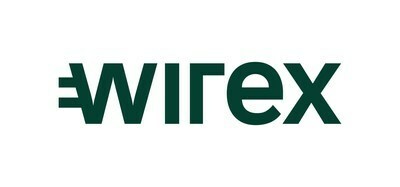Trump’s Crypto Platform Sparks Controversy
This post was originally published on this site

Donald Trump’s cryptocurrency venture, World Liberty Financial, has drawn significant attention with its recent token swap. On Wednesday, the platform exchanged $10 million worth of Coinbase Global Inc.’s (NASDAQ:COIN) wrapped Bitcoin (cbBTC) for WBTC, an alternative wrapped Bitcoin associated with crypto entrepreneur Justin Sun. This move has raised questions about the platform’s strategy, Sun’s involvement, and the broader implications for the DeFi space.
Token Swap Highlights Ties to Justin Sun
World Liberty Financial, which positions itself as a DeFi lending platform, executed the swap through its official digital wallet. The transaction involved trading 103 cbBTC tokens for WBTC, marking a notable pivot in the platform’s holdings. Wrapped Bitcoin tokens, such as cbBTC and WBTC, are crucial for enabling Bitcoin holders to engage in decentralized finance on the Ethereum blockchain.
Justin Sun, a high-profile crypto entrepreneur and adviser to World Liberty Financial, distanced himself from the decision, stating, “This is their own financial choice; I have nothing to do with it.” Sun has been a controversial figure in the crypto world, most recently gaining attention for his $6.2 million purchase of a banana duct-taped to a wall at a Sotheby’s auction.
Sun’s $30 million investment in World Liberty Financial in November solidified his role as an adviser and helped Trump’s platform reach a financial threshold enabling it to generate profit.
Legal and Regulatory Backdrop
The swap is the latest development in an ongoing conflict involving wrapped Bitcoin tokens. Coinbase (NASDAQ:COIN), which launched cbBTC earlier this year, delisted WBTC, citing risks associated with Sun’s alleged control over the asset. BiT Global, the operator of WBTC and a partner of Sun, responded by suing Coinbase to prevent the delisting.
In a significant legal victory for Coinbase, a federal judge in California denied BiT Global’s request for a temporary restraining order to block the delisting. Coinbase maintained that Sun’s involvement posed “unacceptable risks” to its customers and the integrity of its exchange.
This legal backdrop underscores the complexities of the cryptocurrency landscape, where regulatory scrutiny and disputes over token control are common.
World Liberty Financial’s Expanding Portfolio
The token swap is part of a broader pattern of activity from World Liberty Financial. Last week, the platform acquired notable cryptocurrencies such as AAVE and LINK. Additionally, its wallets received approximately $250,000 worth of ONDO, a token issued by Ondo Finance, which specializes in asset tokenization.
While the platform is yet to become operational, these acquisitions suggest an aggressive strategy to position itself as a key player in the DeFi market.
Implications for DeFi and Wrapped Bitcoin
The swap between cbBTC and WBTC highlights a growing divide in the wrapped Bitcoin market. As a widely adopted wrapped Bitcoin token, WBTC has historically been a staple for Bitcoin integration into DeFi ecosystems. However, its association with Sun and related controversies have raised questions about its reliability and governance.
Coinbase’s cbBTC represents a newer entrant to the market, offering an alternative to WBTC. By distancing itself from Sun, Coinbase aims to provide a more transparent and secure wrapped Bitcoin option.
World Liberty Financial’s decision to align with WBTC rather than cbBTC indicates a calculated risk, potentially betting on Sun’s influence to strengthen its market position. However, this move also exposes the platform to regulatory and reputational risks associated with Sun’s controversial history.
What’s Next for Trump’s Crypto Platform?
World Liberty Financial’s activities have sparked curiosity and controversy in equal measure. With high-profile figures like Trump and Sun at its helm, the platform is uniquely positioned to make waves in the crypto industry.
However, its success hinges on overcoming several challenges:
Regulatory Scrutiny: The platform must navigate the increasingly strict regulatory landscape surrounding cryptocurrencies.
Market Trust: Aligning with contentious figures like Sun may erode investor confidence.
Operational Launch: World Liberty Financial must transition from an active wallet to a fully operational DeFi platform to prove its viability.
The Bottom Line
Trump’s crypto platform, World Liberty Financial, has taken a bold step with its $10 million token swap involving Justin Sun-associated WBTC. While the move positions the platform strategically in the DeFi space, it also invites scrutiny and controversy.
As the platform continues to build its portfolio and navigate legal challenges, its long-term success will depend on its ability to balance innovation with transparency and trust. Whether this latest move signals strength or a misstep remains to be seen in the evolving world of cryptocurrency.
























